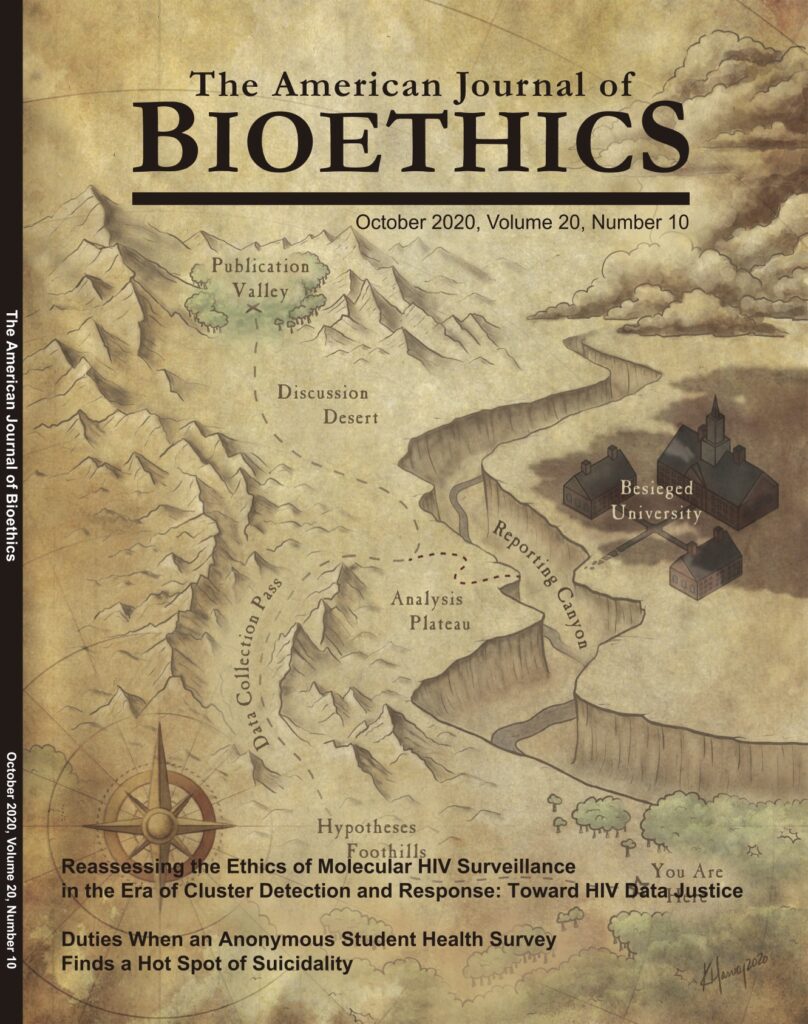by Justin C. Smith
Molldrem and Smith’s thoughtful article “Reassessing the Ethics of Molecular HIV Surveillance in the Era of Cluster Detection and Response: Toward HIV Data Justice,” calls attention to vitally important considerations in the implementation of molecular HIV surveillance (MHS) in HIV cluster detection response (CDR) efforts. The authors are rightly concerned with the myriad ethical questions posed by how these efforts are carried out, and they echo concerns that some members of the HIV advocacy community in the United States have raised. These questions perhaps take on additional weight in the context of the Federal Ending the HIV Epidemic (EHE) initiative, which includes molecular CDR as a foundational tool of one of its four “pillars.”
In 2019, the Trump Administration announced the launch of “Ending the HIV Epidemic: A Plan for America” (EHE), a Federal initiative that has as its goal the reduction of new HIV transmissions by 90% by the year 2030. EHE aims to achieve this goal by increasing HIV-related resources within 57 specific jurisdictions (48 counties, 7 states, San Juan, Puerto Rico, and Washington, D.C.) in the United States where over 50% of new HIV diagnoses occurred in 2016. EHE is organized into four “pillars”: Diagnose, which concerns diagnosing people with HIV as early as possible; Prevent, which concerns scaling-up HIV prevention efforts including access to HIV Pre-exposure Prophylaxis (PrEP) and HIV PEP (Post-exposure Prophylaxis); Treat, which concerns the provision of medical care and supportive services to people living with HIV; and Respond, which concerns responding quickly to outbreaks of HIV, including the use of molecular CDR methods. I am part of a team that is responsible for the planning and implementation of EHE in a large metropolitan area in the Southeastern United States, and my experience is that of the four pillars of EHE, the Respond pillar is the one that has received the least amount of attention in our planning efforts and in our engagement with members of our local community. This is due in no small part to the paucity of succinct, public-facing communication on the process, purpose, and value-add of molecular CDR for communities. As many others have called for, molecular CDR efforts should incorporate continuous community engagement, which includes members of communities made vulnerable to HIV as well as those who work in public health institutions responsible for the delivery of HIV-related treatment and prevention services.

A reasonable question to ask about molecular CDR concerns the value that it adds to public health HIV responses above and beyond traditional epidemiologic surveillance methods. Examples of implementation of molecular CDR from Massachusetts and Texas suggest that these efforts yielded identification of a greater number of people living with HIV than was possible using traditional epidemiologic disease investigation methods. This, in turn, led to the provision and scale-up of HIV prevention and treatment services in the impacted communities. While identifying greater numbers of people with HIV has potential benefit for individuals who can begin the process of engaging in HIV care and for communities to enact mitigation strategies that can interrupt onward HIV transmission, does the added specificity gained by molecular CDR methods lead to different or better HIV interventions? And is the cost of this added specificity worth the potential risks to communities of molecular CDR that Molldrem and Smith call to our attention? If, for example, public health authorities already know that Black and Latino gay and bisexual men living within a particular community are at heightened risk of HIV acquisition, how does the public health response to that knowledge change with the addition of molecular HIV surveillance data? We should have robust dialogue within communities where molecular CDR efforts are planned or are already underway to have clear answers to these types of questions.
Given that molecular CDR is a foundational component of the United States’ Federal response to HIV, ensuring that this technology is deployed responsibly and ethically is of paramount importance. The United States’ response to the COVID-19 pandemic has brought into sharp relief both the importance and the difficulty in engendering a high degree of public trust in public health authorities. The Ending the HIV Epidemic initiative will be strengthened by the inclusion of continuous engagement with communities specifically about molecular CDR and its role in the initiative overall. If the United States is to achieve the ambitious goals outlined in the Ending the HIV Epidemic initiative, each pillar must be strong. The Respond pillar of the plan can be strengthened by having a clear accounting of both the benefits and potential harms that may accrue to individuals and communities resulting from the implementation of molecular CDR programs.